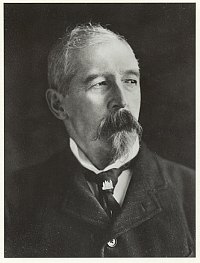Harold Dillon, 17th Viscount Dillon facts for kids
Quick facts for kids
The Viscount Dillon
|
|
|---|---|
 |
|
| Chairman of the National Portrait Gallery | |
| In office 1894–1928 |
|
| President of the Society of Antiquaries of London | |
| In office 1897–1904 |
|
| President of the Royal Archaeological Institute | |
| In office 1892–1898 |
|
| Personal details | |
| Born |
Harold Arthur Lee-Dillon
24 January 1844 Victoria Square, Westminster, London, England |
| Died | 18 December 1932 (aged 88) |
Harold Arthur Lee-Dillon, 17th Viscount Dillon (born January 24, 1844 – died December 18, 1932) was an important English historian. He was especially known for his deep knowledge of old weapons, armour, and medieval clothing. He was also an antiquary, which means someone who studies old objects and history.
Contents
A Life Dedicated to History
Harold Dillon was born in Victoria Square, Westminster, London. He was the oldest son of Arthur Dillon, 16th Viscount Dillon. He went to a private school and later studied at the University of Bonn in Germany.
Early Career and Military Service
When he was young, Harold Dillon joined the army.
- In 1862, he became an Ensign in the Rifle Brigade.
- By 1866, he was promoted to Lieutenant.
- He served in places like India and Canada.
- In 1874, he left the regular army.
- Later, he joined the local army group called the Oxfordshire Militia.
- He became a Captain and then a Major before retiring from military service in 1891.
- In 1892, he became the 17th Viscount Dillon, taking over from his father.
A Passion for Historical Study
After leaving the army, Harold Dillon focused on his true passion: studying history. He wrote more than 50 books and articles about historical topics. He became a leading expert on the history of arms and armour. He also knew a lot about medieval clothes.
Important Roles in History and Art
Harold Dillon held many important positions where he could share his knowledge.
- From 1894 to 1928, he was the chairman of the National Portrait Gallery. This is a famous museum in London that displays portraits of important British people.
- During his first year there, a portrait of him was painted by Georgina Brackenbury.
- He also gave many portraits from his family home, Ditchley Park, to the gallery. One famous painting he gave was of his ancestor, Sir Henry Lee, painted by Antonio Moro.
- From 1892 to 1913, he was the Curator of the Royal Armouries. This is the UK's national museum of arms and armour.
He was also a leader in several historical societies:
- He was President of the Royal Archaeological Institute from 1892 to 1898. This group studies ancient times and archaeology.
- He was President of the Society of Antiquaries of London from 1897 to 1904. This society is one of the oldest groups in the UK dedicated to the study of antiquities.
- He helped start the Society for Army Historical Research and was its first president until he passed away.
- In 1902, he became a founding member of the British Academy, a group for top scholars in the humanities and social sciences.
- He was also appointed as an antiquary to the Royal Academy, a famous art institution.
In 1921, he received a special award called the Order of the Companions of Honour (CH). This award recognized his important work with the National Portrait Gallery.
Harold Dillon's only son passed away before him. So, when Harold Dillon died in 1932, his nephew, Arthur, became the next Viscount Dillon.

